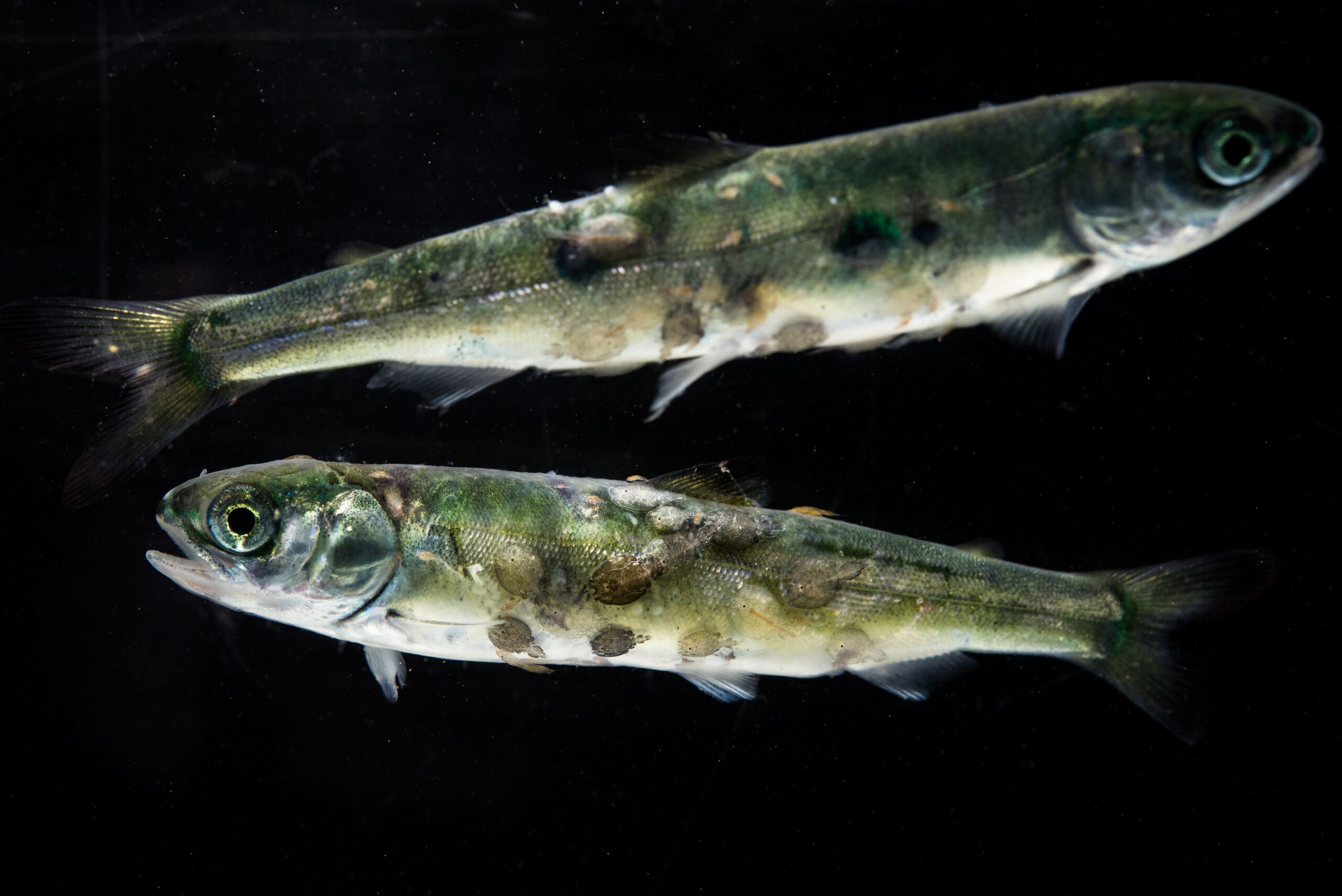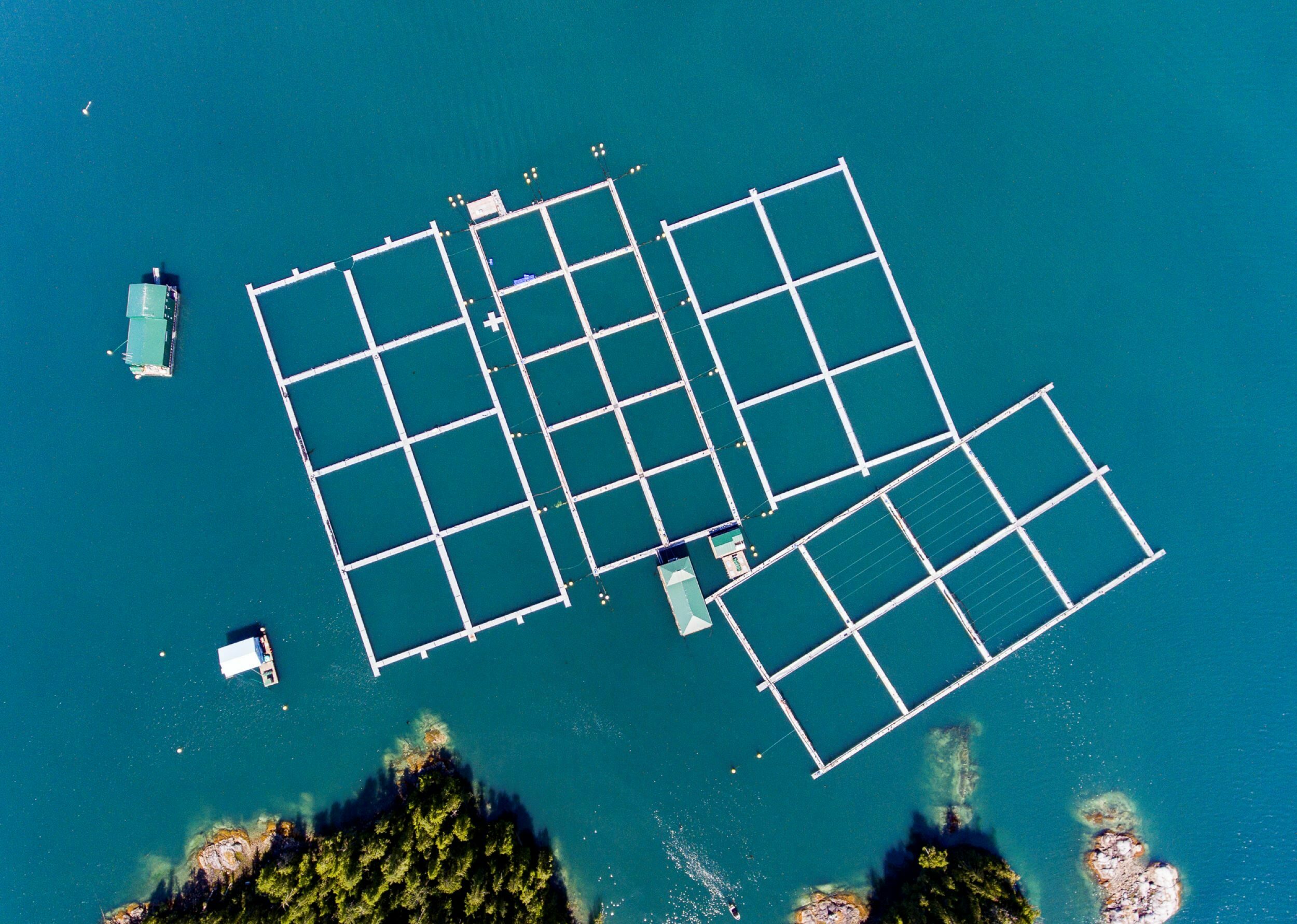
‘Afraid of the water’? Life in a city that dumps billions of litres of raw sewage into lakes and rivers
10 billion litres of sewage are dumped into Winnipeg’s lakes and rivers each year. Some...
Biologist Stan Proboszcz remembers Prime Minister Justin Trudeau’s 2019 election campaign commitment clearly: to develop a plan to get fish farms out of B.C. waters and pursue closed-containment systems by 2025.
But that Liberal Party of Canada promise has gotten murkier and murkier in the years since, according to Proboszcz. He says slippery language is clearly demonstrated in internal documents from Fisheries and Oceans Canada, which he obtained through an access to information request and which were reviewed by The Narwhal.
To Proboszcz, the documents show staff tasked with carrying out Trudeau’s original promise to transition away from fish farms strayed from the language of the very mandate they were assigned to accomplish, starting in their first meeting. The subtle but potentially significant change in language is not directly spoken about in the documents, and it’s not clear whether the change came from direction from senior officials.
In 2021, Trudeau mandated the fisheries minister to “work with the province of British Columbia and Indigenous communities on a responsible plan to transition from open-net pen salmon farming in coastal British Columbia waters by 2025.” A nearly identical mandate was issued to the fisheries minister in 2019.
But in documents obtained by Proboszcz, those mandated timelines are seemingly interpreted differently, and mention multiple times a commitment to “develop a plan by 2025,” rather than committing to make the transition by that year.
The Strategic Oversight Committee for the B.C. Aquaculture Transition Plan, a group made up of federal, provincial and First Nations representatives tasked with meeting Trudeau’s mandate, met for the first time on Oct. 16, 2020.
In the terms of reference for that committee, which was led by Fisheries and Oceans Canada regional director general Rebecca Reid, the purpose of the strategic oversight committee was described this way: “The Minister of Fisheries and Oceans Canada has been mandated by the Prime Minister to work with the Province of British Columbia and Indigenous communities to create a responsible plan to transition open-net pen farming in coastal B.C.”
Proboszcz, who works with Watershed Watch Salmon Society, says this word change is subtle but it confuses the goal — if the province is not transitioning from open-net fish farms, then what is it transitioning to?
“They’re not talking about a transition from open-net salmon farms anymore,” he says of this instance. “They’re talking about just producing a plan by 2025, to transition existing open nets into some other open-net form, that may or may not reduce interactions with wild fish.”
“They have changed the meaning of the promise.”

Proboszcz fears this is evidence the government is set on protecting fish farms. He worries the ongoing fish farm consultation process — which will run into 2023 — will result in a continuation of the “status quo,” leaving migrating wild salmon at risk of picking up disease and sea lice from fish farms.
In an email to The Narwhal, a spokesperson for the minister said “[Fisheries and Oceans Canada Minister Joyce] Murray’s mandate is to continue to work with the province of British Columbia and Indigenous communities on a responsible plan to transition from open net-pen salmon farming in coastal British Columbia waters.”
The statement did not answer any specific questions about the documents in question or the strategic oversight committee. It did not respond directly to The Narwhal’s questions about Proboszcz’s concerns that there is a discrepancy between language used internally (transition open-net fish farms) versus language used publicly (transition from open-net fish farms).
Galagame’, Bob Chamberlin, chair of the First Nation Wild Salmon Alliance, agrees with Proboszcz’s concerns about the implications of the subtle changes in language. He says he’s disheartened by the change in language around the commitment and fears the public engagement process has a “foregone conclusion.”
“How is it that the prime minister of the country can write in your mandate letter to transition from [open-net fish farms], then have that change to transition planning, and then [Fisheries and Oceans Canada] is here figuring out how to keep the status quo going?” he asked.
“I don’t understand that.”
Murray told The Narwhal in an interview in August that the government wants to keep farmed salmon away from wild salmon, but she didn’t set a deadline.
“I’m not pre-judging that,” she said when asked when the last open-net pen farm would be removed from B.C. waters.
Proboszcz says the backtracking has been a gradual process. Trudeau’s mandate letters were already a step back from the campaign promise, since the letters did not directly mention moving to closed-containment systems. Then, internal documents suggested the department would “develop a plan by 2025,” instead of open-net pen fish farms being removed by 2025 — another step back from the campaign promise, he says.
Fisheries and Oceans Canada released a framework for an “open-net pen transition plan” in July 2022, which mentions Trudeau’s original mandate to transition from open-net pen fish farms by 2025. Likewise, in a 2021 report summarizing the results of the initial engagement process on the “open-net pen transition plan,” the parliamentary secretary for Fisheries and Oceans Canada specifically referenced the original mandate to “work with the province of British Columbia and Indigenous communities to create a responsible plan to transition from open net-pen salmon farming in coastal British Columbia waters by 2025.” But Proboszcz says what he sees as altered language being used behind closed doors is significant.
Proboszcz believes some of the softer language he’s been seeing more recently may be due to the court challenge filed against the ministry by the salmon farming industry. Industry proponents argued former fisheries minister Bernadette Jordan breached the industry’s rights to procedural fairness when she ordered the immediate closure of fish farms in the Discovery Islands. The Federal Court of Canada issued a ruling in their favour in April 2022, overturning Jordan’s order.
Chamberlin says the government and industry are proposing new technologies, while some critics of fish farms are proposing an external science panel. But all of these things will take years, and with many salmon populations on the south coast plummeting, “salmon today don’t have that luxury,” he says.

Murray is currently “consulting on the transition away from open-net aquaculture,” a spokesperson for the minister said in an email. “Nothing is being ruled out. Industry must work to completely eliminate, or minimize interactions between wild and farmed fish as quickly as possible. In the meantime, we will hold industry responsible to progressively minimize these interactions.”
Proboszcz says the goal of reducing interaction between farmed fish and wild fish is little comfort to him because minimizing interaction has always been the goal, and it hasn’t been effective.
Piscine orthoreovirus, known as PRV, is a disease found in 80 per cent of farmed Atlantic salmon that is linked to a host of fish health problems, including heart and skeletal muscle inflammation and haemorrhages in internal organs.
Laboratory testing by the B.C. government showed the underwater effluent in Clayoquot Sound was contaminated with the virus.
In spring 2022, one farm was found to have sea lice levels five times the limit during critical wild fish migration. The limit is three lice per fish, and during an audit Fisheries and Oceans Canada officials detected 14 lice per fish at Bawden Point, a fish farm on the west coast of Vancouver Island owned by the global salmon producer Cermaq.
In August, Murray told The Narwhal the key point is the department is “developing a transition away from open-net pen salmon aquaculture and my goal is to greatly minimize or eliminate interaction between farmed and wild salmon.” But at the same time, she said the government is aiming for “long-term growth of sustainable aquaculture in B.C.”
Chamberlain points out the “problematic” tension of trusting a department to protect salmon when that department also has a mandate to promote aquaculture.
“You can see, without looking too deeply, that this is a horribly flawed process,” he says.
In 2020, $566 million worth of farmed Atlantic salmon was exported from B.C., making it the province’s top export in the agriculture, seafood, food and beverage category that year.
Chamberlain wants to see the minister make use of the precautionary principle in the Oceans Act, which states that in the absence of concise science, the federal department must err on the side of caution.
He wants Murray to utilize that principle, and “if not, explain why she won’t.”
Chamberlain says he has seen the transition process carrying on without meaningful consultation with First Nations, and he gets the sense the decision has already been made. He wants to see recognition of Indigenous Peoples’ constitutionally protected rights as well as of the provincial and federal governments’ enactment of the United Nations Declaration on the Rights of Indigenous Peoples.
He poses the question: “Do you understand the difference between the privilege from a licence and a right?”
“What we’re talking about is constitutionally protected Aboriginal rights.”
Following consultation with First Nations and industry, a final decision on the closure of fish farms in the Discovery Islands is expected in January, according to a Fisheries and Oceans announcement this summer.
This June, Murray will present a transition plan “which will give industry a full year to prepare for stronger, new regulations that will come into force,” the minister’s spokesperson said.
One of the committees Proboszcz asked about in his access to information request made a first action item in an early meeting in autumn 2020: to get clarity on the definition of “transition.”
“Clarity needs to be provided to the committees and the public about what is meant by ‘transition,’ ” the minutes said.
The department is “to seek further direction on this point from senior management and provide speaking points for clarity to promote a common understanding and consistent messaging,” the November 2020 action item stated.
Approximately six months later, while 26 out of 28 action items were completed, that first action item remained “in progress.” It’s unclear if it has been resolved since.
That lack of clarity is still in issue, and Chamberlin says there is still time to take bold action. Otherwise, if the process continues with the proposed new licensing regimes and exploring new technologies with the hopes they make a difference, no meaningful change is coming for wild salmon, he says.
“What we’re looking at, if all this becomes true, is about six years of status quo with new ribbons on it,” he says.
“There’s nothing new here.”
Proboszcz is holding out hope for the transition process.
“I just hope the minister and her office staff will adjust the trajectory of this transition and get it back online to what they initially promised.”
Get the inside scoop on The Narwhal’s environment and climate reporting by signing up for our free newsletter. On a warm September evening nearly 15...
Continue reading
10 billion litres of sewage are dumped into Winnipeg’s lakes and rivers each year. Some...

Court sides with Xatśūll First Nation, temporarily halting Mount Polley mine waste expansion

Break out the champagne: Emma’s storied life and leadership in journalism has earned her the...
